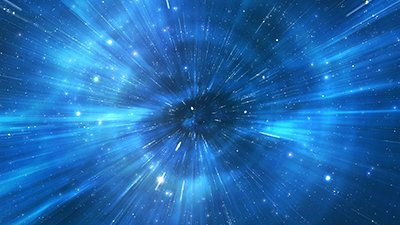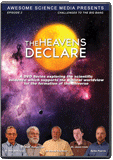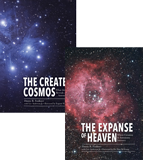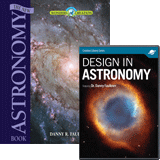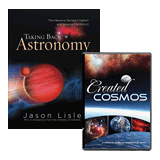
Have Scientists Discovered Neutrinos from One Second After the Big Bang?
A recent news item reported the discovery of neutrinos from just one second after the big bang. Such a thing would be big news indeed, but could such a thing be true? Alas, examination shows that the news headline isn’t exactly accurate. But before we dive into the results of that news item, let’s do a little historical review to set the stage for the not-so-big reveal.
CMB vs. CNB
In 1965, two astronomers announced the discovery of the cosmic microwave background (CMB). The CMB is a radiation field in the microwave part of the spectrum permeating the universe. Seventeen years earlier, cosmologists had said that if the big bang model were true, then there ought to be a CMB. Therefore, the discovery of the CMB was hailed as proof that the universe began with a big bang, billions of years ago. Consequently, the big bang has been the standard cosmology for a half century. Ever since, cosmologists have altered the big bang to fit the data coming from the CMB and other constraints.
The big bang model predicted another cosmic background, the cosmic neutrino background (CNB, though sometimes called the CνB, because the Greek letter nu often is used as an abbreviation for neutrinos). What are neutrinos? Neutrinos are elementary particles that have some highly unusual properties. Neutrinos have no electrical charge (the name means “little neutral one” in Italian), but their most unusual property is that they almost never interact with other matter, and that makes them extremely difficult to detect.
Neutrinos were first predicted in 1930, but it wasn’t until 1956 that the first neutrinos were detected. For many years, physicists thought that neutrinos had no mass, traveled at the speed of light, and were stable, remaining the same flavor or type. However, in 2001 experimental results demonstrated that neutrinos have a tiny amount of mass, travel only slightly slower than light, and oscillate between three flavors. This discovery played a key role in solving the solar neutrino problem.
There’s a big difference between “almost never interacts with matter” and “never interacts with matter.”
How do we detect a particle that almost never interacts with matter? As we could see in the movie The Princess Bride, “there’s is a big difference between mostly dead and all dead.” Likewise, there’s a big difference between “almost never interacts with matter” and “never interacts with matter.” The method of detection is to identify a reaction between neutrinos of certain energy and particular nuclei of atoms, then build a detector with a lot of the target nuclei and look for the products of the expected reaction. This is merely very difficult, not impossible. However, in the case of the CNB, this may be impossible.
The Theory Behind the Story
Why do big bang theorists expect there to be a CNB? To explain that, it might be best to begin with the explanation for the CMB. The CMB hypothetically comes from the age of recombination about 380,000 years after the big bang. Prior to the age of recombination, the temperature of the universe was too high for neutral atoms of hydrogen to exist. In this state, radiation would have continually interacted with the ionized matter in the universe, preventing radiation from traveling very far. Physicists say that matter and energy were coupled. However, at the age of recombination, radiation was no longer coupled to matter, and was free to travel extremely great distances without interference. The temperature of the universe at the age of recombination would have been about 3,000 K, and that temperature would be preserved in the spectrum of the radiation. But the expansion of the universe since then would have cooled the radiation field to 2.73 K, placing the radiation field in the microwave part of the spectrum. Presumably, this radiation field is the CMB.
Similarly, in an early big bang universe, neutrinos and other matter would have been coupled. Neutrinos are produced in many nuclear reactions, and according to the big bang model, many such nuclear reactions were going in the early universe. At the same time, many neutrinos would have been absorbed in reverse reactions, resulting in a nearly steady state of neutrinos with matter. This interaction between neutrinos and other matter would have prevented neutrinos from traveling very far, resulting in the coupling of neutrinos and other matter. However, as the big bang universe expanded and cooled, most of those nuclear reactions would have ceased, decoupling neutrinos from other matter and permitting neutrinos to travel unfettered. Theoretical physicists estimate that this age of decoupling of neutrinos and other matter would have been about a second after the big bang, as opposed to the decoupling of radiation and matter 380,000 years later. The original “temperature” of this neutrino field would have been extremely hot, but the expansion of the universe since would have cooled the temperature to about 1.95 K.
What Was Really Found
Neutrinos of this energy would be very difficult, if not impossible, to detect. Therefore, the recent news stories, such as this one with the bold title “Earliest Signal Ever: Scientists Find Relic Neutrinos From 1 Second After the Big Bang,”1 were quite a surprise. Even more bold was this statement in this news account:
The data is in, and the results are incontrovertible: the cosmic neutrino background is real, and agrees with the Big Bang.2
Neutrinos of this energy would be very difficult, if not impossible, to detect.
It all sounds very convincing, that physicists had actually detected neutrinos in the CNB, coming from one second after the big bang. Except that they didn’t. Rather, what was reported was indirect evidence of those neutrinos. Even after their decoupling, the gravitational effect of primordial neutrinos would have affected the density distribution of matter in the early big bang universe. This hypothetically would show up as a phase shift in acoustic oscillations in the CMB. Indeed, this supposedly was discovered a few years ago.3 Hence, this earlier study amounted to the first indirect detection of a possible effect of the CNB.
So, what was discovered this time? The temperature fluctuations in the CMB supposedly were caused by density fluctuations in the early universe that eventually gave rise to the structure that we see in the universe today (the distribution of galaxies). Therefore, any effects of primordial neutrinos are expected to show up in the structure of the universe observable today. For nearly two decades the Sloan Digital Sky Survey (SDSS) has been collecting data on the distribution of galaxies, revealing the structure of the universe. The current study modeled the power spectrum of the most recent SDSS data release in terms of two parameters - α, and β -, that would describe the effect of primordial neutrinos. The study yielded constraints on the values of α and β that are consistent with the CNB. Hence, all the excitement over this result. But this amounts to a second, indirect detection, not direct detection, of the CNB, as the headlines implied (or in some cases claimed).
Conclusion
What does all this mean to young-earth creationists, who reject the big bang? It’s not entirely clear. First, keep in mind that this is indirect evidence of the CNB, not direct detection. Given the extremely low energy of these neutrinos today, it’s not likely that they ever will be detected. Second, this is a statistical study. The researchers claim a 95% confidence that they have found this indirect signal. However, such highly confident signals have been heralded in the past, only to be walked back later. One example was the announcement of the first evidence for cosmic inflation five years ago. That one lasted only a few months. Third, this result is highly model-dependent. If one changes the model, the result changes. And if the model is wrong, the result isn’t likely to be true anyway.
Ultimately, I’m not very impressed. These results are very quantitative and precise, but precision doesn’t equate with accuracy. A model and data interpreted in terms of the model can be very precise, but they also can be wrong.
Footnotes
- Ethan Siegel, “Earliest Signal Ever: Scientists Find Relic Neutrinos From 1 Second After The Big Bang,” Forbes, February 28, 2019, https://www.forbes.com/sites/startswithabang/2019/02/28/earliest-signal-ever-scientists-find-relic-neutrinos-from-1-second-after-the-big-bang/.
- Daniel Baumann et al., “First Constraint on the Neutrino-Induced Phase Shift in the Spectrum of Baryon Acoustic Oscillations,” Nature Physics, February 25, 2019, doi:10.1038/s41567-019-0435-6.
- Brent Follin et al., “A First Detection of the Acoustic Oscillation Phase Shift Expected from the Cosmic Neutrino Background,” Phys. Rev. Lett. 115, no. 091301 (August 14, 2015): doi:10.1103/PhysRevLett.115.091301.
Recommended Resources

Answers in Genesis is an apologetics ministry, dedicated to helping Christians defend their faith and proclaim the good news of Jesus Christ.
- Customer Service 800.778.3390
- © 2024 Answers in Genesis


